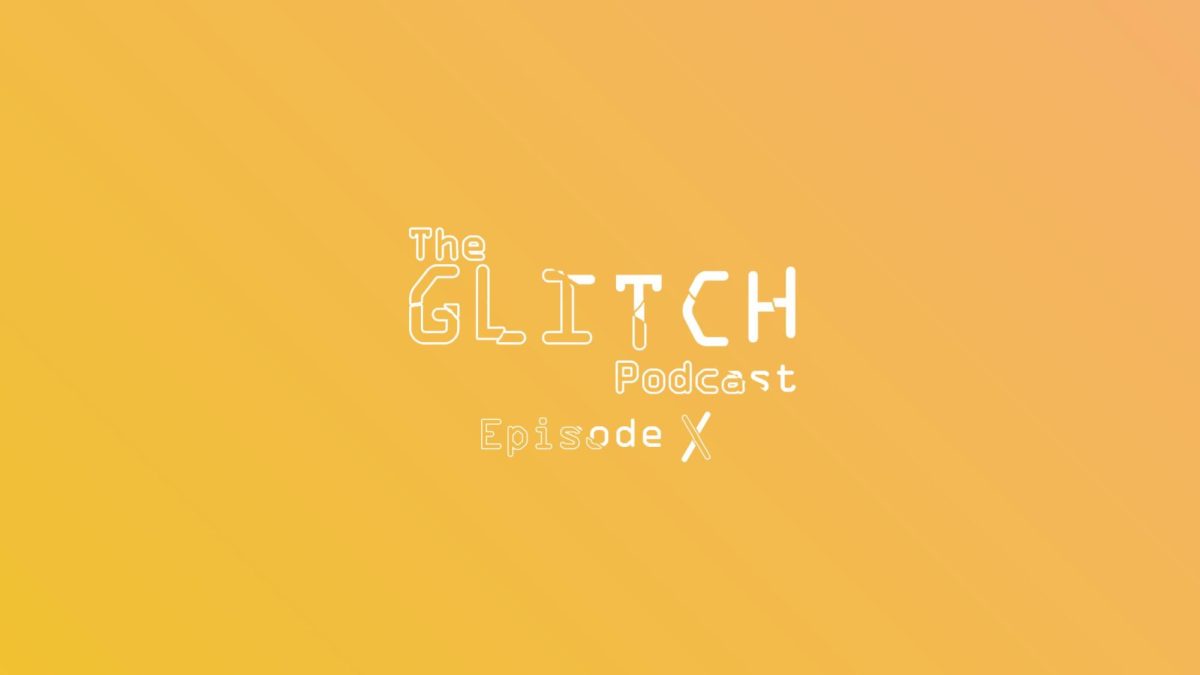Climate Change Crisis: This holiday season, you may be curled up by a fire, but in a few years, our planet’s going to be on fire.
Our Earth is about to descend into a near-apocalyptic disaster. Here’s why.
December 19, 2019
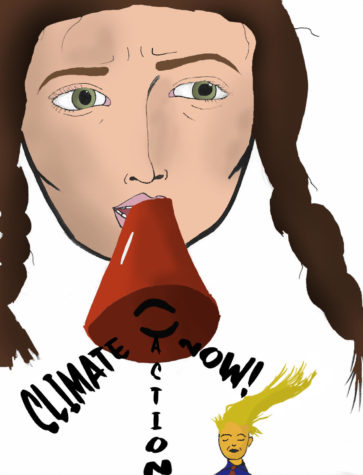
This political cartoon depicts climate change activist, Greta Thunberg standing up to political figures, using her voice as a catalyst for change to save the planet. Thunberg’s power blows President Trump away in his views and lack of action regarding Climate Change.
For the last few decades, the phrases “climate change” and “save the Earth” have been thrown around, but the superficial efforts to save our climates have fallen short in comparison to the raging issues decimating the planet at an unprecedented speed.
“Climate change refers to a shift in global temperature and precipitation over time on the planet. It relates to a complex balance between long-term and short-term cycles within the atmosphere and various ecosystems on the planet,” AP Environmental Science teacher Jenny Sickle said.
The Science Behind the Change: Greenhouse Effect
The greenhouse effect is an effect where the atmosphere traps heat that emanates from the Earth’s surface. There is a certain variety of gases that barricade heat from escaping. Gases that are semi-permanent in the atmosphere lack a response to temperature changes. Feedback loops result from gases that elicit a response from changes in temperature according to NASA.
As the Earth’s atmosphere warms, water vapor increases but so does the likelihood of precipitation, making these some of the most important feedback loops to the greenhouse effect.
The gases:
Carbon dioxide is released through natural processes and human processes. The natural processes include respiration and volcanic eruptions. Deforestation, land-use changes, and burning fossil fuels are just a handful of the human processes that emit carbon dioxide.
Methane is a gas created by the decomposition of wastes in landfills, agriculture, and rice production. Some more commonly known causes are digestion and manure management with livestock. Methane is a more active greenhouse gas than carbon dioxide but is less abundant in the atmosphere.
Nitrous oxide is a powerful greenhouse gas that is primarily produced by soil cultivation practices. The use of commercial and organic fertilizers are a large contributor, as well as fossil fuel combustion, biomass burning, and nitric acid production.
Chlorofluorocarbons are synthetic compounds from industries that have regulated production and release due to their detrimental effects on the ozone layer.
A deeper look into human carbon emissions:
Humans have increased atmospheric the atmospheric CO2 concentration has increased by more than a third since the Industrial Revolution began due to humans according to NASA. Human activities such as burning coal and fossil fuels cause some of the top carbon emissions. Other human activities such as biomass burning, cement production, and deforestation emit carbon dioxide according to NOAA. Over one hundred and fifty years of industrialization, deforestation, mass agriculture, the number of greenhouse gases have skyrocketed to a number that hasn’t been seen in three million years, according to the UN.
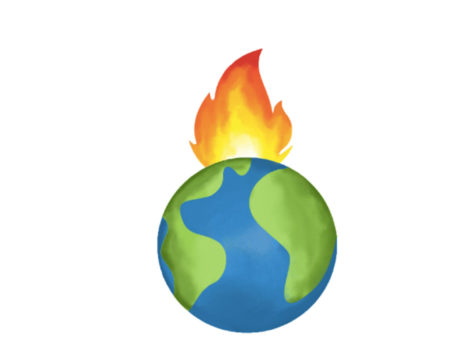
Why this is a problem:
There has been a 1.5°F rise in average global temperature since 1880 (NOAA). This heated planet has caused excess evaporation, which causes there to be more water in the atmosphere. The concentration of greenhouse gases in the atmosphere is linked to the Earth’s global temperature. These changes cause the water supply, health, and agriculture to be at risk. Ecosystems and environments have a delicate balance, but the increase in temperature disrupts this equilibrium.
Climate change has caused rising temperatures to make weather events more extreme, broken apart ice in the Antarctic, lengthened wildfire seasons, bleached coral reefs, and allowed mosquitoes to expand their territory and spread disease (EDF and NASA). The sea levels are projected to rise between 10 and 32 inches by the end of this century according to National Geographic. Ecosystems will continue to fluctuate and many species, such as polar bears may be unable to adapt, causing species extinction.
“There are observable changes in the planet’s air and water temperature, the size of the glaciers and sea levels. There is evidence of changes in climate throughout Earth’s history, but the current rate that the climate is changing is rapid,” Sickle said, “The intensity of weather events and the impacts on food production is also a concern for many people.”
“I believe it’s a problem because of the changes we are seeing. Plants and animals are not able to adapt fast enough and could go extinct. If climate continues we could see a large reduction of the current ecosystems that exist as well as the 6th mass extinction,” Eco Club president Sam Isert ’20 said.
What others are doing:
UN Kyoto Protocol: A protocol that legally binds countries with developed parties with the goal to reduce CO2 emissions.
Paris Agreement: Unifies nations into a common cause to fight climate change and adapt to its effects, and support developing countries with the tools to do so.
Eco Club makes an effort to improve the sustainability of the school. Throughout the year, students work in groups to complete a project each year based on interest. Past projects included the installation of LED lights in the gym and window films added around campus to reduce the building’s electricity usage. Last year, Eco Club members presented to the administration about a carpool pass to encourage less individual cars to drive to the school each year. It was implemented at the beginning of this school year. Eco Club also also facilitates the school recycling program. On a broader spectrum, DCSD has a Sustainability Team that encourages schools to find more eco-friendly options for schools and provides resources to achieve those goals.

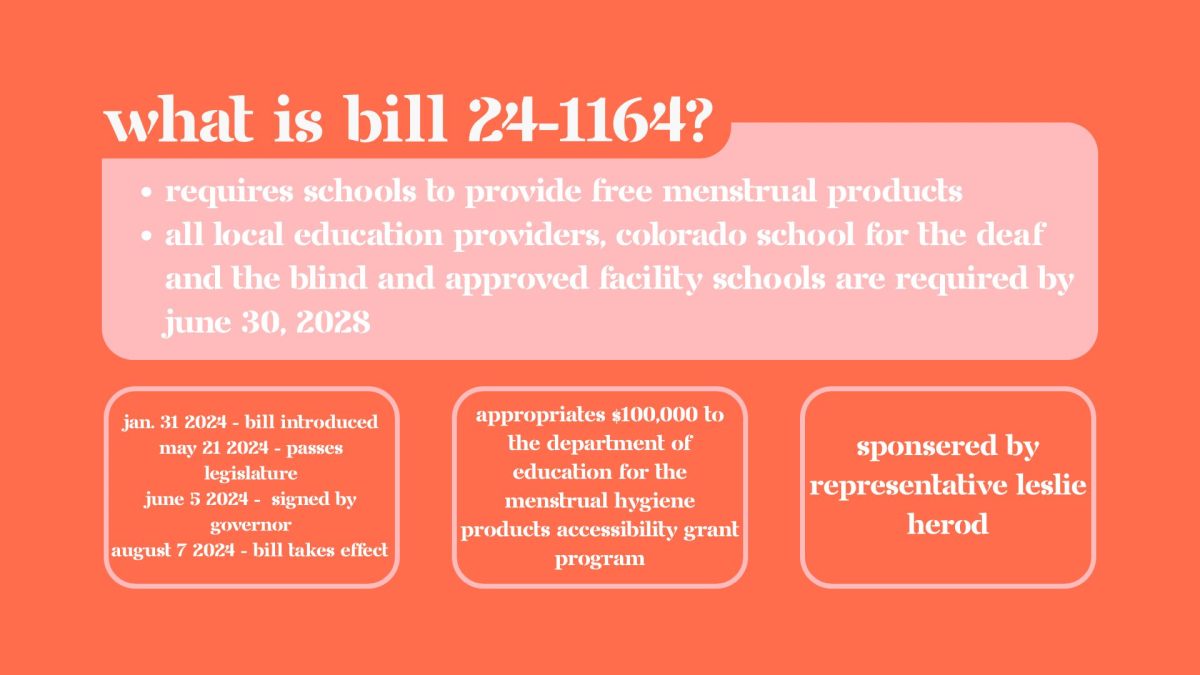

![Minutes before the Activities Fair in the gym, president Abhi Gowda ‘26 prepares the stall for his club Helping Hands, Sept. 4. A relatively new club, Helping Hands was co-started by Gowda and focuses on assisting the homeless, and just last year they succeeded in raising a couple hundred donations to send to shelters. This year, they have goals to expand, with hopes to increase volunteer opportunities and take in-person trips to shelters, as well as extend their help beyond just homeless people. “The Activities Fair gives a lot of underclassmen the opportunity to really get to know the Canyon culture, and it gives them many opportunities for service and volunteering,” Gowda said. “[Through the Activities Fair,] I hope to find a bunch of new and passionate members about our club and just get our name out there and spread awareness to the cause that we’re fighting for.”](https://rockmediaonline.org/wp-content/uploads/2025/09/1-2-1200x885.jpg)

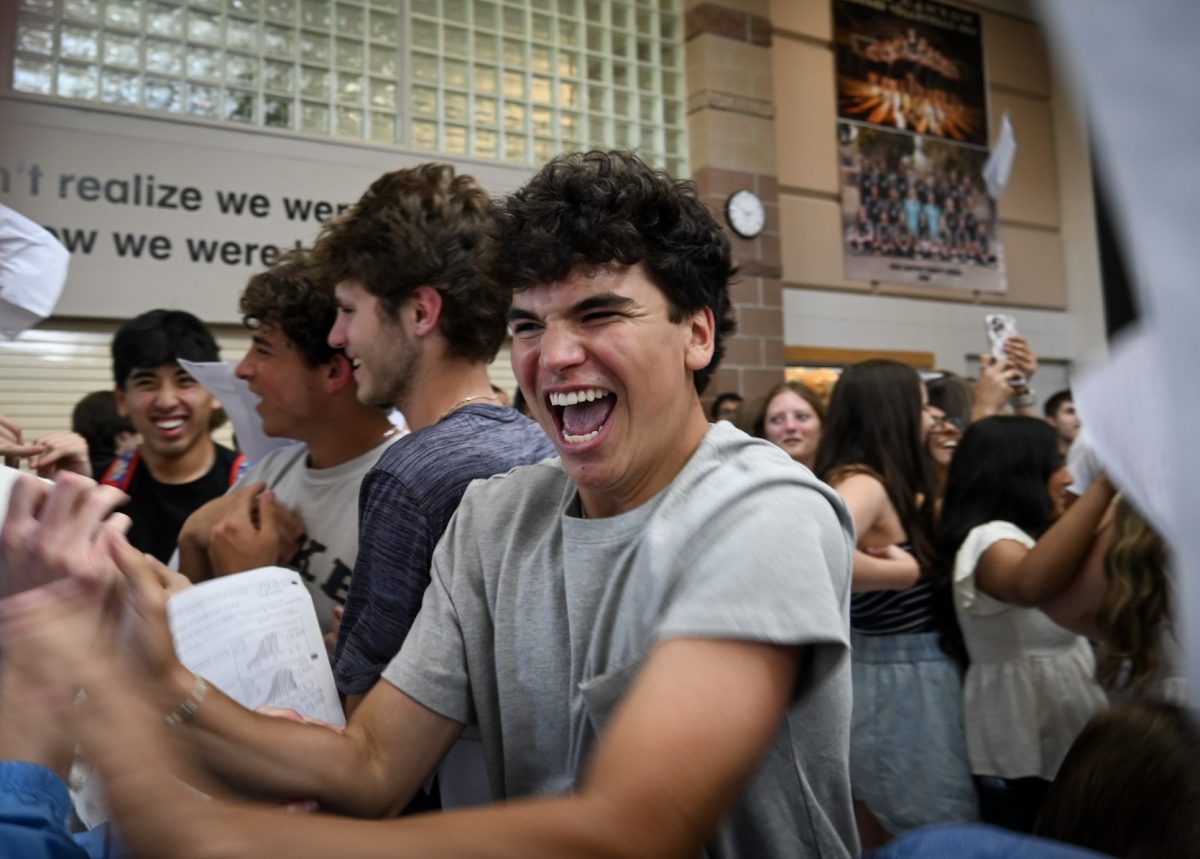



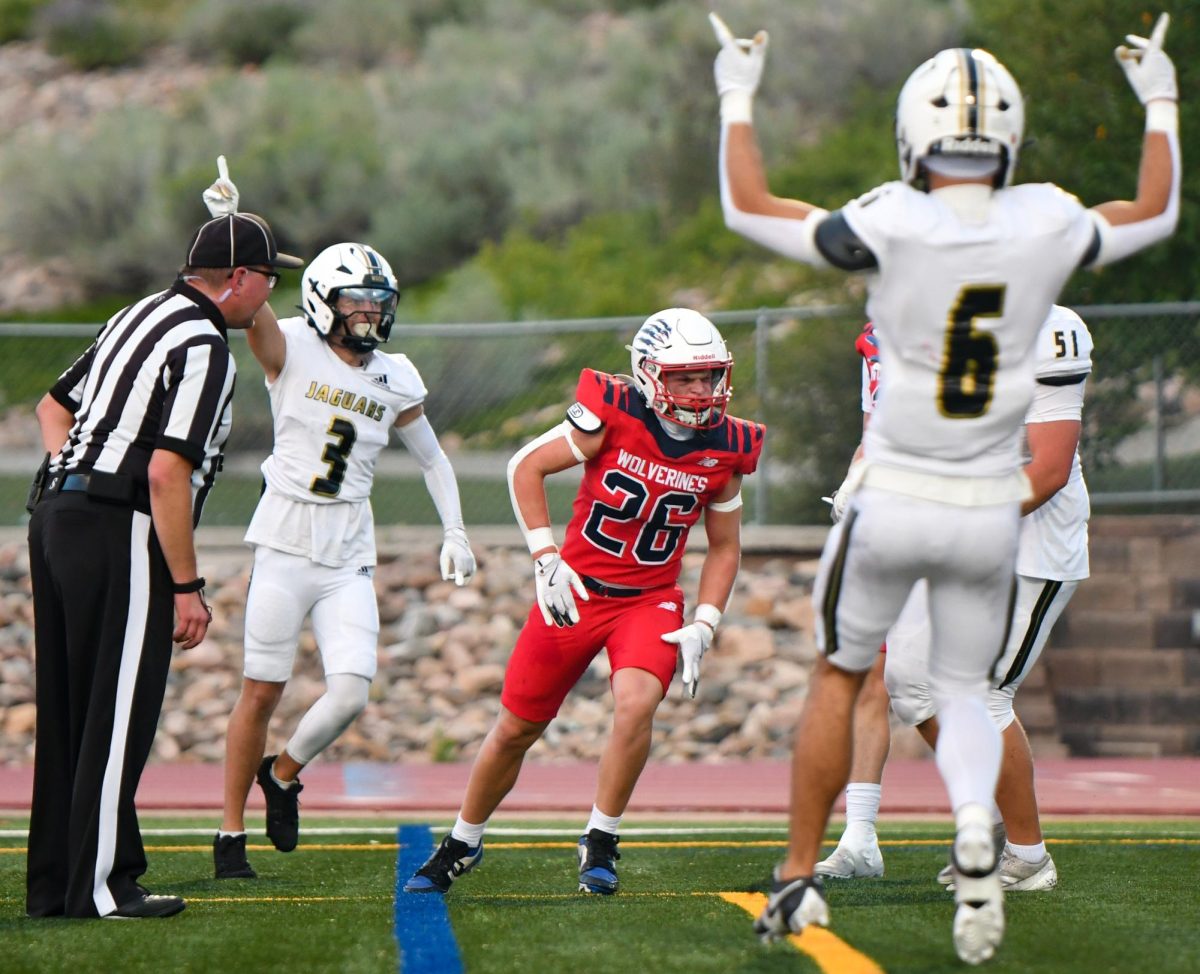

![The winter guard team makes fifth place at the state championship finals in the Denver Coliseum, March 30. The team performed to Barnes Country's “Glitter and Gold,” lead by coaches Margo Sanford, Blair Bickerton and Anna Orgren. In their class there were a total of nine groups participating, and the top five who made it to finals received a plaque. “[Walking onto the stage] is very nerve-wracking, but also very exciting as well. When you first start color guard there's a lot of anxiety and uncertainty when you first perform in front of an audience, but once you've done it for a while, it starts to become the best part of the season,” Ella West ‘25 said. “It's very fulfilling to see an audience react to something you've put your heart and soul into.”](https://rockmediaonline.org/wp-content/uploads/2025/04/Both-socal-media-nd-website-main-1-1200x846.jpg)


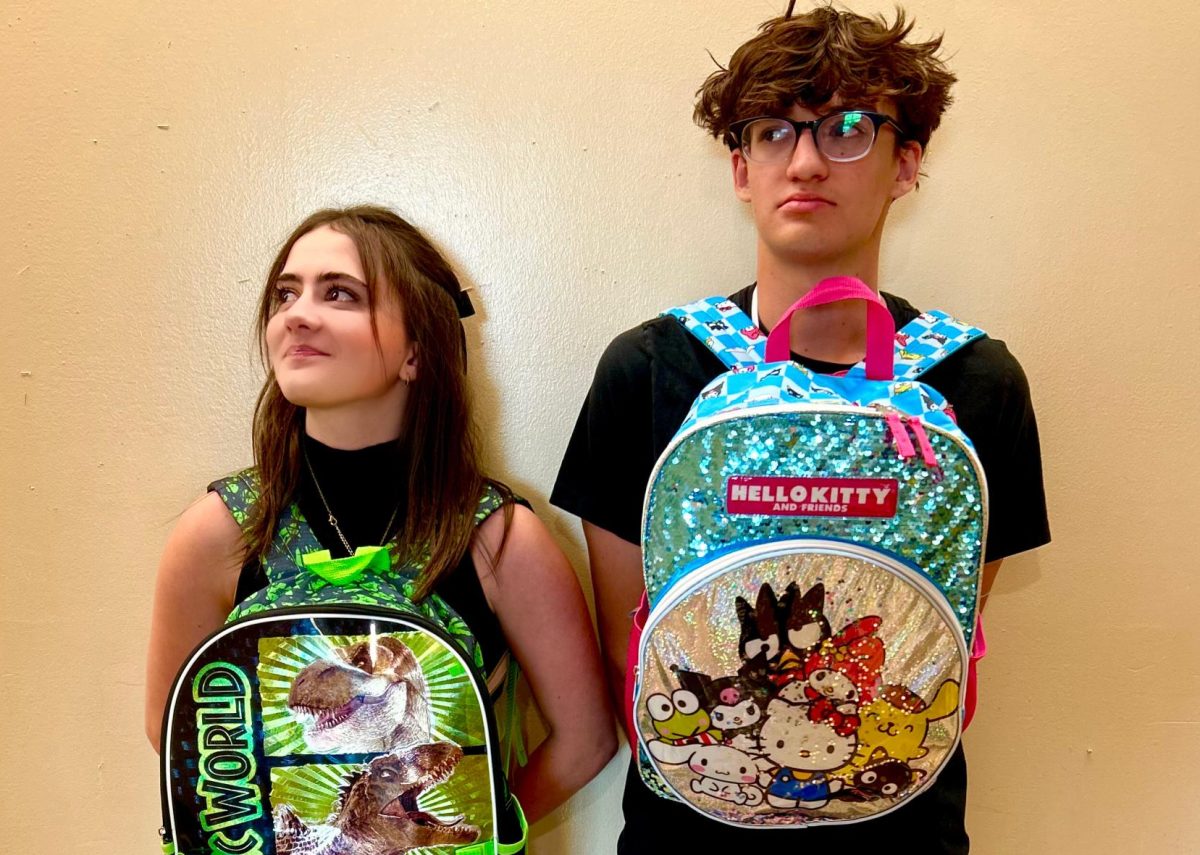
![April marks the 25th anniversary of Sexual Assault Awareness Month, created by the National Sexual Violence Resource Center (NSVRC). This month is to spread awareness of the harassment, assault and abuse that happens around the world. The symbol that represented the month was a teal ribbon; however, some survivors of assault create different symbols and movements like the TikTok trend in 2022, where survivors would tattoo Medusa on their body, in honor of her backstory in Greek Mythology. “I don't think [this month is known] at all. I rarely see anybody talk about it. I rarely see much of an emphasis on posting it online, or much discussion about it, and I feel like there needs to be way more discussion,” an anonymous source said. “I think just validating every experience that a person has gone through, regardless of the degree of it, the severity, is an essential step into making sure that people are aware that this is a very real problem in a society and that we need to do better in addressing it.”](https://rockmediaonline.org/wp-content/uploads/2025/04/IMG_0011-1200x900.jpg)










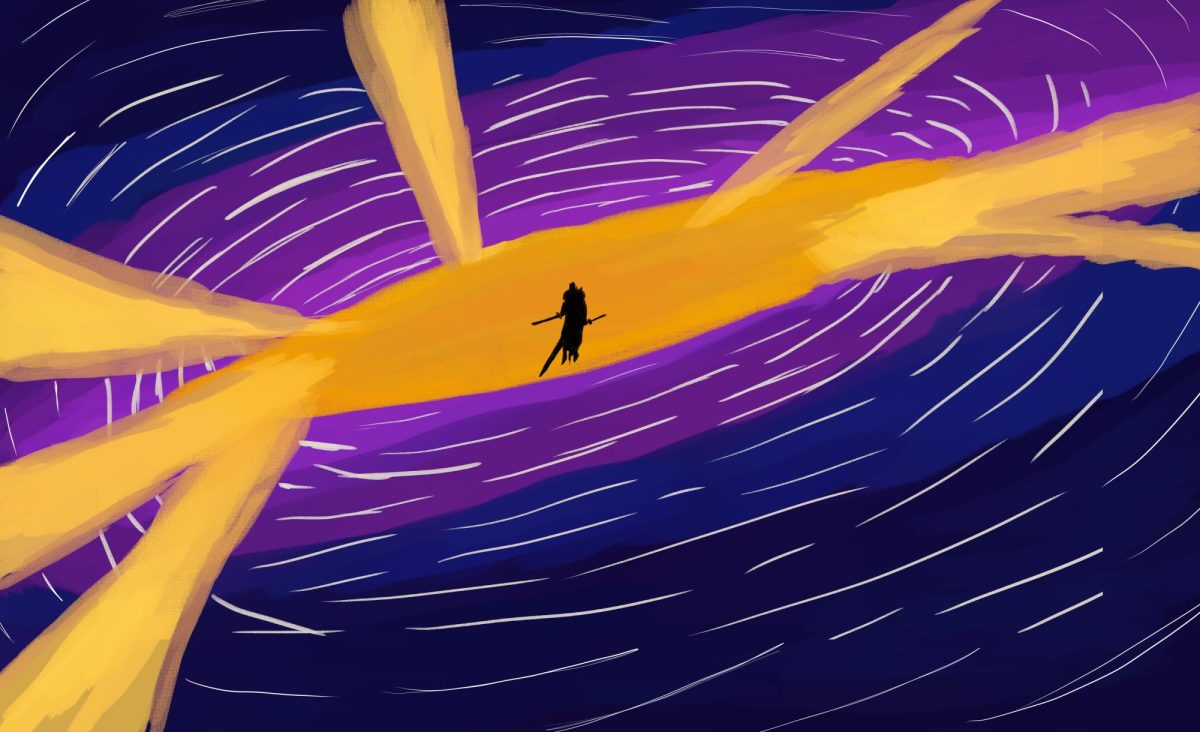
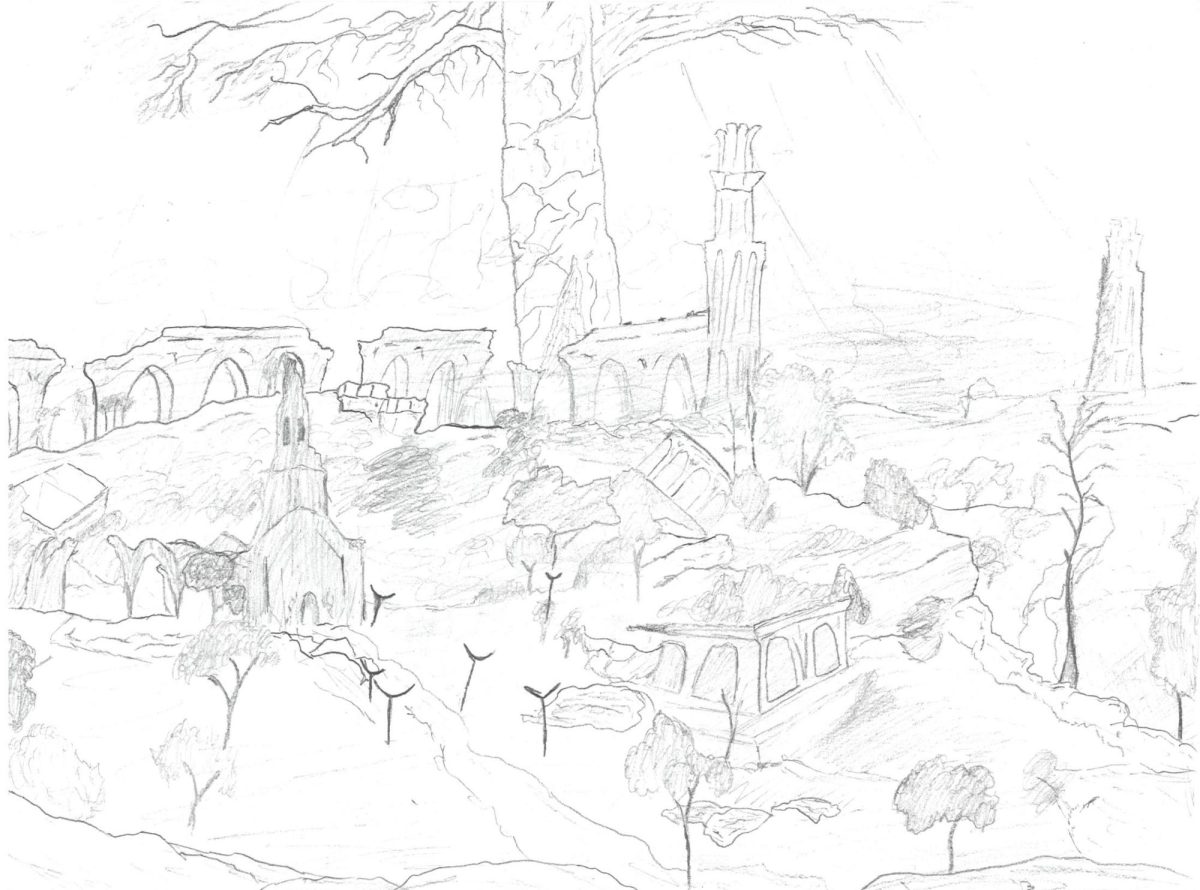
![Lesbian Visibility Day is April 26, and it’s a holiday to celebrate the lesbian community of the world. Lesbian Visibility day was established in 2008 by many queer activists and organizations who sought to raise more awareness for lesbian history and culture. “So this is why during Lesbian Visibility [Day] we celebrate and center all lesbians, both cis and trans, while also showing solidarity with all LGBTQ+ women and nonbinary people,” Linda Reily, in an article written by her, said.](https://rockmediaonline.org/wp-content/uploads/2025/04/Lesbian-Visibility-day.jpeg)



